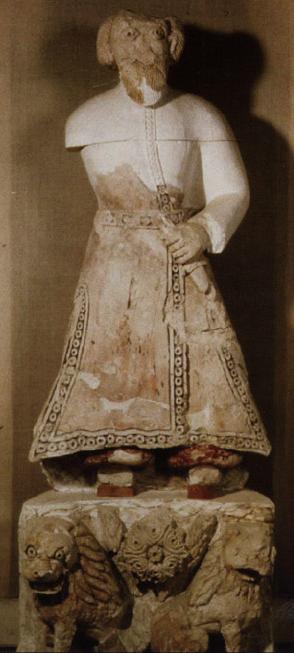'The Standing Caliph'
Umayyad Statue, Khirbat al-Mafjir, c.740AD
Under the Umayyad Caliphs (661-750) human representation and even sculpture was common in a secular, though not a religious context.
This originally painted stucco figure comes from the palace complex built by the Caliphs Hisham and al-Walid II at Khirbat al-Mafjir, near Jericho in the early 740s.
It may well represent the Caliph himself. (Rockefeller Archaeological Museum, Jerusalem; David Nicolle photograph)
Source: p.79, EH - 071 - The Great Islamic Conquests AD 632-750 by David Nicolle
3. Caliphal statue from Khirbet al-Mafjar wearing Sasanian-style qabāʾ with “pearl” border.
Source: Fig. 3, Arab Dress. From the dawn of Islam to Modern times by Smirna Si
Referenced as figure 49, p,43 Islamic Art and Architecture 650-1250 by Richard Ettinghausen, Oleg Grabar, Marilyn Jenkins
Khirbat al-Mafjar 8th century, bath, painted statue of a prince.
Referenced as figure 125 in The military technology of classical Islam by D Nicolle
125. Statue from Khirbat al Marjar, mid-8th century AD, Palestinian, Palestine Archaeological Museum, East Jerusalem (Ham).
Other Umayyad statues and fresco from Khirbat al-Mafjir, Palestine, early 8th century AD.
Illustrations of Arabian Costume and Soldiers
Other 8th Century Illustrations of Costume and Soldiers

